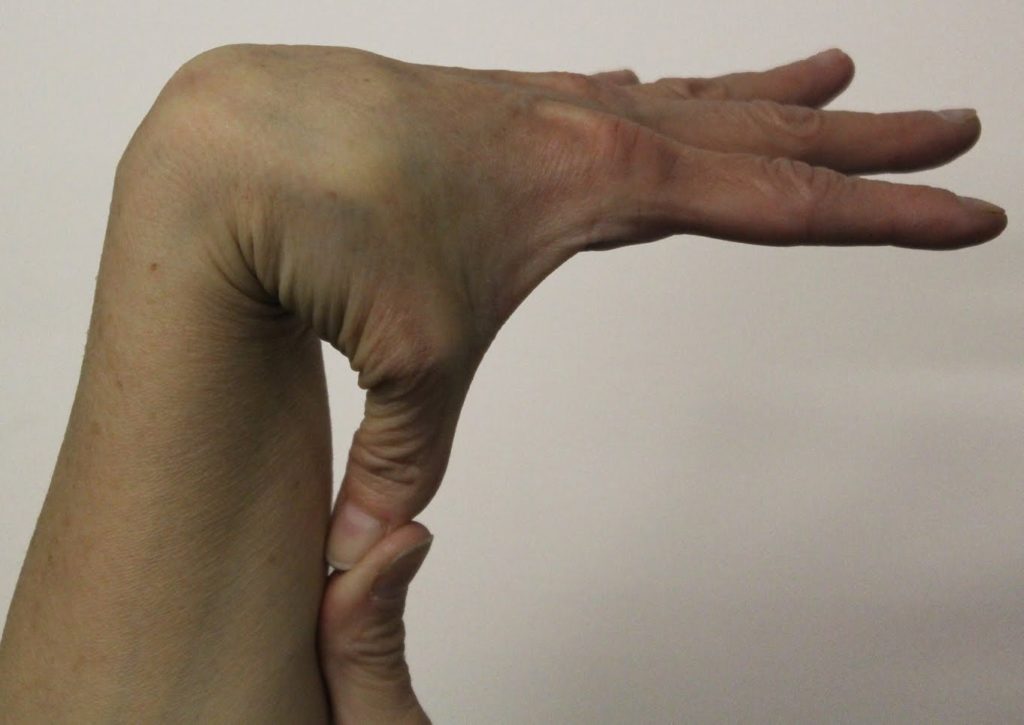Symptoms of joint hypermobility
Many people with joint hypermobility have few or no problems related to their increased range of movement.
Being hypermobile does not necessarily mean you will have any pain or difficulty. If you have symptoms, it is likely that you have joint hypermobility syndrome (JHS).
Symptoms of joint hypermobility syndrome
JHS can cause a wide range of symptoms, including:
pain and stiffness in the joints and muscles – particularly towards the end of the day and after physical activity
clicking joints
fatigue (extreme tiredness)
night pains – which can disrupt your sleep
poor co-ordination
recurrent joint dislocations – such as a dislocated shoulder
recurrent soft tissue injuries – such as sprains and sports injuries
A person with JHS may also have a number of other symptoms related to weaknesses in the connective tissues throughout their body. Some of these symptoms are described below.
Digestive system problems
JHS can cause symptoms that affect your digestive system, because the muscles that squeeze food through your digestive system can weaken.
This can cause a range of problems, including:
gastro-oesophageal reflux disease (GORD) – where stomach acid leaks from your stomach to your gullet, causing symptoms such as heartburn
gastroparesis – where the stomach has difficulty emptying its contents into the small bowel, which can cause bloating and nausea
irritable bowel syndrome (IBS) – a disorder that affects the digestive system, causing tummy pain, diarrhoea and constipation
Postural orthostatic tachycardia syndrome (POTS)
JHS can also cause abnormalities in the part of your nervous system that controls bodily functions you do not actively think about, such as the beating of your heart. This is known as your autonomic nervous system.
These abnormalities can cause problems when you stand up or sit in the same position for a while. Your blood pressure can drop to low levels, making you feel sick, dizzy and sweaty. You may also faint.
In some people, these abnormalities can lead to postural orthostatic tachycardia syndrome (POTS). POTS causes your pulse rate to increase rapidly within a few minutes of standing up. You may also experience:
dizziness or fainting
tummy upsets
sweating
a sensation of anxiety
purple puffy fingers and feet
a pounding or fluttering heart beat (heart palpitations)
Other problems
People with JHS may have other related conditions and further symptoms, including:
stress incontinence – a type of urinary incontinence that occurs because the pelvic floor muscles are too weak to prevent accidental urination
hernias – where an internal part of the body, such as an organ, pushes through a weakness in the muscle or surrounding tissue wall
in women, pelvic organ prolapse – where the organs inside the pelvis slip down from their normal position
varicose veins – swollen and enlarged veins, usually blue or dark purple
flat feet – where the inner part of your feet (the arch) is not raised off the ground when you stand
drooping eyelids
a tendency to bruise easily and develop stretch marks
thin or stretchy skin
Although a link is not entirely certain, it is thought that some people with JHS may be at an increased risk of developing osteoarthritis earlier in life than usual.

I do believe every Doctor I have been to has been wrong. When I saw the picture of the hand extending the thumb to the wrist, my eyes couldn’t believe it.I have been able to do this since I was very small.I have every affect on my body that is listed. All of my diagnosis have been blamed on my “it’s in my head”. I do have ARD so bad that now my voice comes and goes.Advanced Osteoporosis and much more.Thank you for posting this eye opening realization to me!